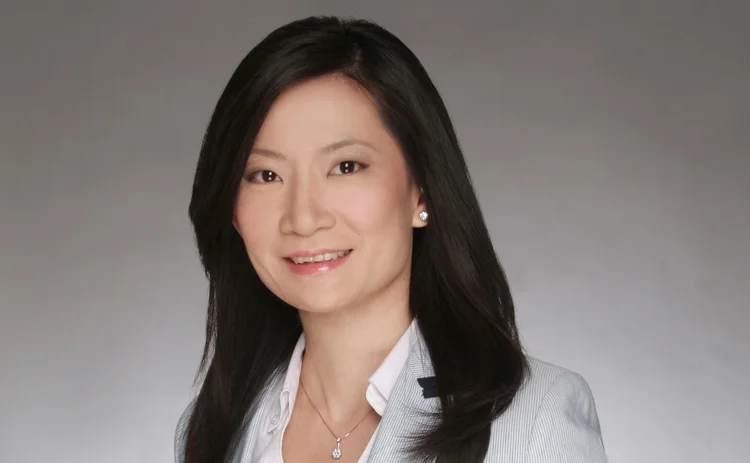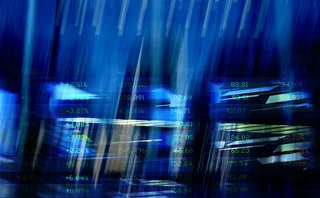
Exchange of the year, Asia: SGX
Energy Risk Asia awards, 2017: Scale and diversity add to exchange’s offering

Singapore Exchange has a reputation for innovation. The integration of financial and commodity derivatives in a single market is rare in Asia-Pacific, if not unique, and the November 2016 acquisition of the Baltic Exchange in London increased its international presence. It has worked hard to develop its multi-asset model, covering equities, commodities, foreign exchange and rates on a single platform. An important element of the expansion of products is a strategy for controlled growth.
“The number one thing we looked at is congruence and adjacency to the current products we have,” says Janice Kan, senior vice-president of derivatives at SGX. “If you look at the commodities space now, we have dry bulk and dry bulk-linked, as well as electricity and rubber, which is in addition to our FX and equities offering. We have a truly multi-asset model – as we add more products in each asset class, the incremental cost is going to be lower because of margin efficiencies, and we can build faster because we stay close to and reach out to the same community.”
Within the commodities space, SGX has expanded along multiple paths, building out a comprehensive business. That has included developing the concept of the ‘virtual steel mill’ through an expansion into iron ore and the addition of coking coal futures, the shipping and freight derivatives market as well as its involvement in the liquid natural gas and electricity markets. However, the exchange is keen to point out that innovation requires support to flourish.
“Spotting the opportunity is only half the battle,” says Cheong Jin Yu, director of the oil, power and gas team within derivatives at SGX. “It is then bringing the traders together, getting them onto the platform, getting them all into the trading space, and then growing the market together with those traders and market participants.”
The figures are impressive. The exchange reports that dry bulk freight derivatives volumes continue to grow strongly, with Q3 2017 volumes growing 42% quarter-on-quarter to 258,000 lots, while open interest rose 6% quarter-on-quarter to more than 100,000 lots. In coking coal futures, SGX reports volumes in 2017 have increased eight-fold since Q4 2016, with a record level of open interest for more than 1.4 million metric tonnes on June 29, 2017. It estimates the contract will reach 15 million tonnes of open interest by the end of 2017, which would constitute a record for the market.
The exchange says its Sicom rubber futures contract saw a 66% increase in trading volume – hitting 8.14 million metric tonnes – for the 12 months ending August 2017. Its issuance of a new OTC rubber forward contract, which allows delivery through warehouse receipts in Qingdao, has also won praise from investors.
There is a need for dynamic management of the risk positions firms have, and screen trading can offer an efficient and low-cost method for that to happen
Janice Kan, SGX
“SGX’s OTC TSR 20 rubber contract has found a ground-breaking way of establishing a warehouse delivery point in Qingdao, China,” noted the board member of one asset manager. “It was introduced at an opportune time when rubber imports into China are rapidly rising and rubber prices are experiencing higher than usual volatility.”
The firm’s wide range of products are supported by its capacity to build technology that streamlines workflow. In September 2016, SGX launched Titan OTC, a platform for off-exchange trade registration that creates a more consistent process for over-the-counter trading and trade processing. It allows OTC interdealer brokers (IDBs) and clearing members to register trades on behalf of clients, then a series of pre-clearing risk checks are executed to novate the deals with the central counterparty upon confirmation from the clearing system. Trades through Titan OTC now account for 30% of SGX derivatives volumes.
SGX also launched screen trading for its iron ore contract in mid-2016 and saw 8,510 lots traded this August, up 18% month-on-month and up 150% year-on-year, while it reports volume traded on screen was 19.6 million metric tonnes. The number of active participants was up 75% year-on-year.
“There is a need for dynamic management of the risk positions firms have, and screen trading can offer an efficient and low-cost method for that to happen,” says Kan. “As with equities, where the majority of the trades happen on screen, iron ore traders need to manage the risk on a day-to-day basis, adjust their positions in a transparent market. It won’t be a jump from primary OTC to screen, it’s about 12–15% of volume right now, with the majority still on the crossing through IDBs.”
The firm’s combined multi-asset approach and electronification has also exposed some markets to players from other business areas, for example it has increased participation in screen trading for iron ore contracts among the wider financial community, although the exchange’s focus is still on OTC markets.
Only users who have a paid subscription or are part of a corporate subscription are able to print or copy content.
To access these options, along with all other subscription benefits, please contact info@risk.net or view our subscription options here: http://subscriptions.risk.net/subscribe
You are currently unable to print this content. Please contact info@risk.net to find out more.
You are currently unable to copy this content. Please contact info@risk.net to find out more.
Copyright Infopro Digital Limited. All rights reserved.
As outlined in our terms and conditions, https://www.infopro-digital.com/terms-and-conditions/subscriptions/ (point 2.4), printing is limited to a single copy.
If you would like to purchase additional rights please email info@risk.net
Copyright Infopro Digital Limited. All rights reserved.
You may share this content using our article tools. As outlined in our terms and conditions, https://www.infopro-digital.com/terms-and-conditions/subscriptions/ (clause 2.4), an Authorised User may only make one copy of the materials for their own personal use. You must also comply with the restrictions in clause 2.5.
If you would like to purchase additional rights please email info@risk.net
More on Awards
Trading systems: structured products/cross-asset – Murex
Murex won the Trading systems: structured products/cross-asset award at the 2025 Risk Markets Technology Awards for its MX.3 platform, praised for its flexibility and advanced analytics
Best vendor for system support and implementation: Murex
Murex has won the Best vendor for system support and implementation at the Risk Markets Technology Awards, recognised for its innovative MX.3 platform, exceptional client support and seamless implementation services
FRTB-IMA product of the year: Murex
Murex wins FRTB-IMA product of the year for its advanced, scalable MX.3 platform enabling seamless regulatory compliance
Pricing and analytics: equities – Finastra
Finastra’s Sophis platform wins the Risk Markets Technology Award for Pricing and analytics in equities, recognised for its robust capabilities in equities and derivatives trading
Best execution product of the year: Tradefeedr
Tradefeedr won Best execution product of the year for its API platform, which standardises and streamlines FX trading data, enabling better performance analysis and collaboration across financial institutions
Collateral management and optimisation product of the year: LSEG Post Trade
LSEG Post Trade wins Collateral management and optimisation product of the year for interconnected services that help mitigate counterparty risk and optimise capital usage
Clearing house of the year: LCH
Risk Awards 2025: LCH outshines rivals in its commitment to innovation and co-operation with clearing members
Driving innovation in risk management and technology
ActiveViam secured three major wins at the Risk Markets Technology Awards 2025 through its commitment to innovation in risk management and technology







